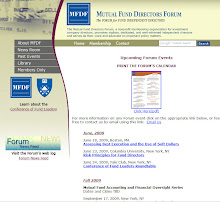K&L Gates' Edward G. Eisert and Mark D. Perlow have issued a short piece, Fair Value Accounting: SEC and FASB Relax Fair Value Rules; Controversy Continues, discussing the competing forces shaping the SEC and FASB's recent re-examination of mark-to-market accounting. The article asserts that the joint SEC and FASB guidance issued on September 30, as well as the FASB's October 10 FASB Staff Position 157-3, taken together were an attempt to reach a compromise between those who supported FAS 157 as the most accurate and realistic method of valuation, and the banking industry who argued that FAS 157 required them "to write down performing assets to 'fire sale' or distressed prices, compelling them to sell more assets to raise capital, and thereby depressing prices further in a downward spiral." In balancing the two competing interests, the SEC and FASB interpretations "relaxed the interpretation of some of FAS 157’s market valuation provisions, but did not suspend market valuation, as some have requested," and has not satisfied either side of the debate.
At the core of the disagreement over mark-to-market accounting is a basic disagreement as to the role that the adoption of FAS 157 has played in the liquidity and credit crisis.
The full text of the Eisert and Perlow piece is available at: http://www.klgates.com/newsstand/Detail.aspx?publication=4997#Fair_Value
At the core of the disagreement over mark-to-market accounting is a basic disagreement as to the role that the adoption of FAS 157 has played in the liquidity and credit crisis.
The ABA believes that FAS 157 has had a significant detrimental impact on the crisis, while auditor and investor groups believe that the crisis was not caused by fair value accounting and that, in fact, FAS 157 has been helpful in exposing problems.Meanwhile, the SEC has initiated its legislatively mandated study of mark-to-market accounting, and scheduled the first of its mark-to-market roundtables for October 29, leaving fund directors, auditors, and preparers of financial statements relying on valuation guidance in a state of flux.
The full text of the Eisert and Perlow piece is available at: http://www.klgates.com/newsstand/Detail.aspx?publication=4997#Fair_Value





